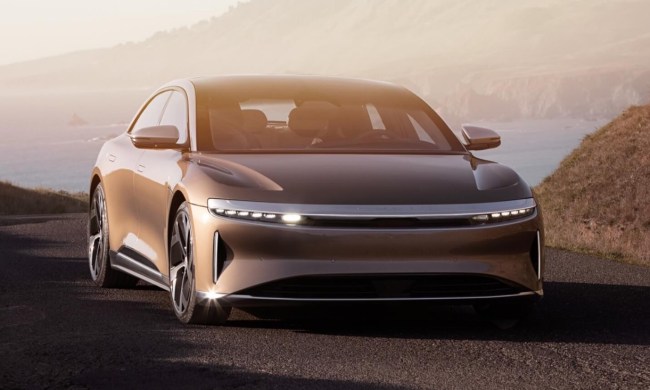Mazda has revealed the specs on its 2017 Mazda6 and Mazda3 models, highlighting the addition of G-Vectoring technology.
Kicking things off with the Mazda6 — which we’ve named the best sedan you can buy — Mazda says it prioritized improving the interior, including the introduction of a range-topping package with Nappa leather seats. Other cabin enhancements include a steering wheel ported from the 2016 Mazda CX-9 with a more ergonomic shape and new wheel-mounted functions, plus a steering wheel heater, full-color TFT driver display, available rear seat heaters, and a reduction in road and wind noise.
In terms of exterior tweaks, Mazda has added a new Machine Gray Metallic paint color but that’s about it. Under the hood, the Japanese automaker made subtle tweaks to its SkyActiv-G direct injection engines for both the Mazda6 and Mazda3. i-Activesense safety features have also been improved with a Smart City Brake Support (SCBS) that better detects pedestrians and widens the speed range when the system is working.
Read More: Carbon fiber could make the Mazda MX-5 Miata even lighter
The biggest improvement, G-Vectoring is part of both 2017 model year cars, and focuses on adjusting body movement with engine torque. “To date, lateral and longitudinal acceleration (G) forces have been controlled separately. GVC (G-Vectoring Control) adjusts engine torque in response to steering wheel action, delivering unified control over both of these forces and optimizing the vertical load on each wheel.” The moment the driver begins turning the steering wheel, torque is applied to shift load to the front wheels and therefore balance the car.
As for the Mazda3, it gains subtle exterior tweaks including a new front grille and wing design with LED headlights. Mazda says the adjustments help widen and lower the visual stance. The compact sedan and hatch also get new 18-inch wheel designs and two new paint colors: Machine Gray Metallic and Eternal Blue Mica.
Inside, a manual hand brake has been replaced with an electronic unit and the instrument panel has been modified. The same steering wheel design as the 2016 CX-9 and new Mazda6 appears in the Mazda3. Finally, the car gains a bit of room in the door pockets.
Like the 2017 Mazda6, the Mazda3 boasts a quieter ride, but Zoom Zoom buyers will likely care more about the automaker’s tweaks to the Mazda’s electric power steering system and dampers, which improve handling and steering feel.
Pricing and on-sale dates have yet to be announced.


